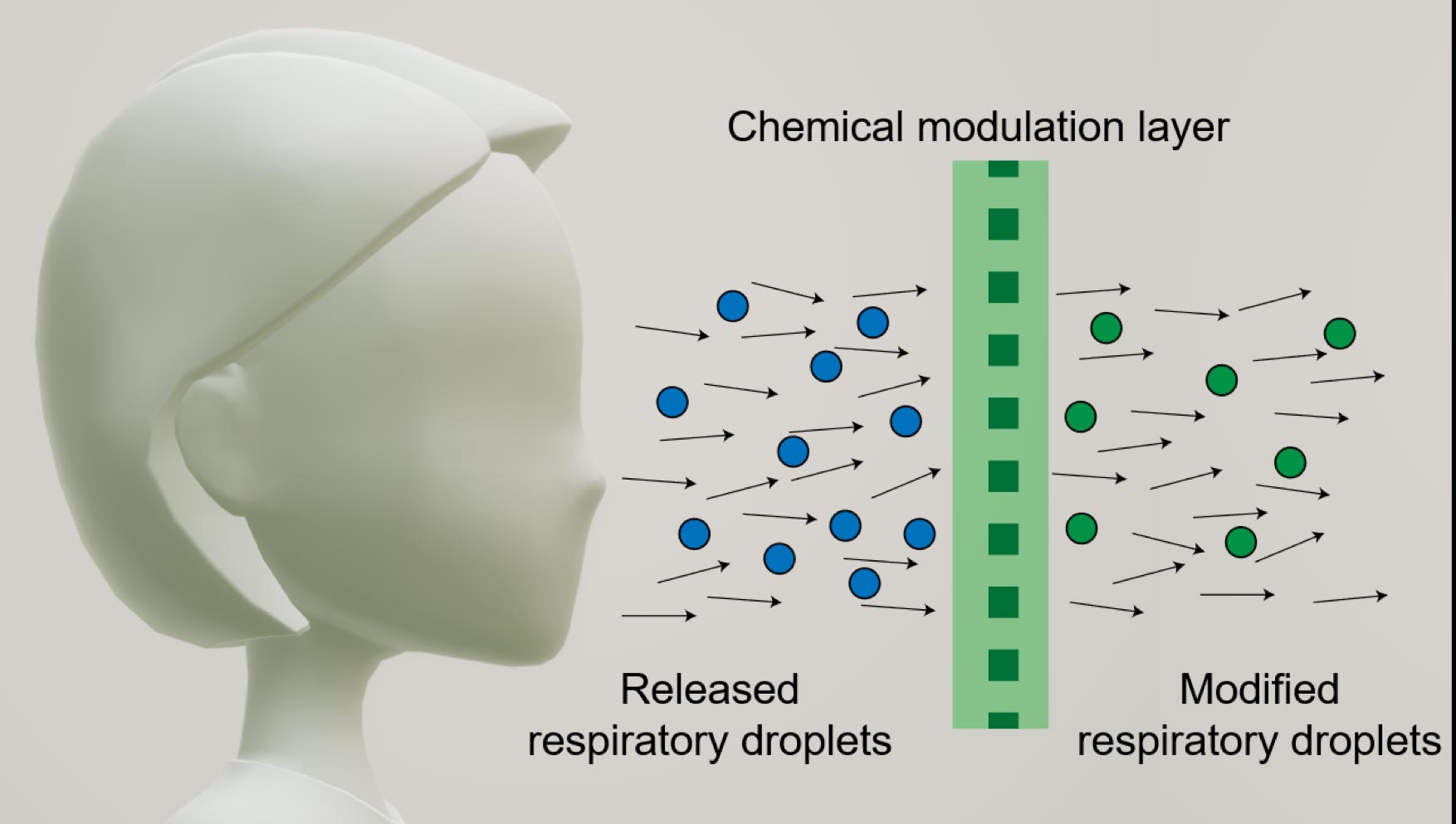
Schematic shows how a chemical modulation layer “sanitizes” the face mask wearer’s respiratory droplets.
Anti-viral layer attacks respiratory droplets to make mask wearer less infectious.
With this in mind, the researchers developed a new concept for a mask that aims to make the wearer less infectious.
The central idea, which received support from the National Science Foundation through a RAPID grant, is to modify mask fabrics with anti-viral chemicals that can sanitize exhaled, escaped respiratory droplets.
A lint-free wipe with just 19% fiber density, for example, sanitized up to 82% of escaped respiratory droplets by volume.
Such fabrics do not make breathing more difficult, and the on-mask chemicals did not detach during simulated inhalation experiments.
The research will be published today (October 29, 2020) in the journal Matter.
“Where there is an outbreak of infectious respiratory disease, controlling the source is most effective in preventing viral spread,” said Haiyue Huang, a 2020 Ryan Fellowship Awardee.
Although masks can block or reroute exhaled respiratory droplets, many droplets (and their embedded viruses) still escape.
To accomplish this, Huang sought to design a mask fabric that: (1) Would not make breathing more difficult, (2) Can load molecular anti-viral agents such as acid and metal ions that can readily dissolve in escaped droplets, and (3) Do not contain volatile chemicals or easily detachable materials that could be inhaled by the wearer.
The researchers found that even loose fabrics with low-fiber packing densities of about 11%, such as medical gauze, still altered 28% of exhaled respiratory droplets by volume.
For tighter fabrics, such as lint-free wipes (the type of fabrics typically used in the lab for cleaning), 82% of respiratory droplets were modified.
Reference: 29 October 2020, Matter.
October 27, 2020
October 26, 2020